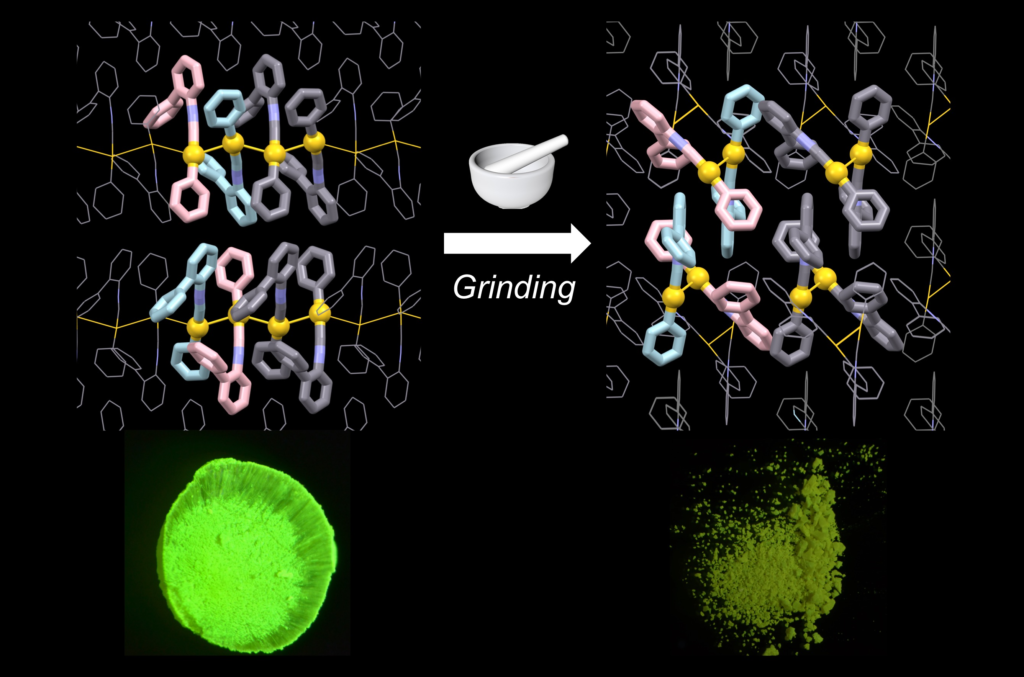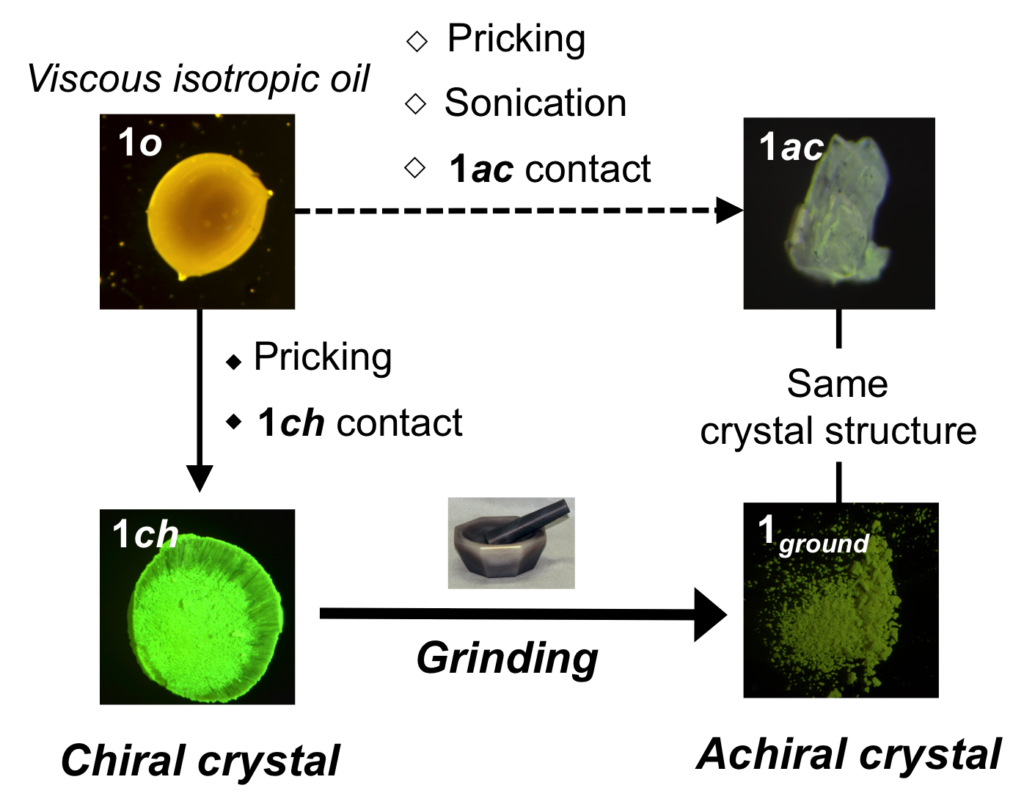New strategy to design mechano-responsive luminescent materials
Research Press Release | July 25, 2017
Crystals made from gold complexes change color as they change structure from “chiral” to “achiral” when ground.
“Smart” materials that change color in response to a mechanical stimulus have a broad range of applications such as creating pressure-sensitive sensors and packaging that can detect tampering.
Researchers at Hokkaido University have now designed a novel “mechano-responsive luminescent material” using a gold and isocyanide complex, which includes two bonded rings of carbon and hydrogen atoms.
When the material is first prepared, it is a viscous oil. The oil emits an orange color under ultraviolet irradiation. When the oil is pricked with a needle, however, it randomly crystallizes either into “chiral” yellow crystals that emit green light or into “achiral” whitish-grey crystals that emit bluish-green light.
A crystal is chiral if the molecules are aligned in a way it cannot be superimposed onto its mirror image. This makes your left and right hands chiral, for example, while a soda pop can would be achiral.
The oil also transformed either into chiral or achiral crystals when in contact with small pieces of each crystal respectively. Furthermore, when ultrasonic was applied to the oil for 20 minutes, it turned into a powder of the achiral crystals.
Remarkably, grinding chiral crystals caused them to transition into achiral crystals while simultaneously changing their emission properties. “This is the first proof that the chiral-to-achiral phase transition caused by a mechanical stimulus could alter emission properties,” says Hajime Ito, the corresponding author of the study published in the Journal of the American Chemical Society. “Achiral crystals are generally more stable than chiral crystals, known as Wallach’s Rule. This makes the chiral-to-achiral transition very reasonable.”
This is the first such example of this kind of material, they say, and their results indicate that the dynamic change between the two crystal phases may be a promising strategy to design universal mechano-responsive functional materials. “By targeting molecules that can form both chiral and achiral crystals and follow Wallach’s Rule, we might be able to develop mechano-responsible materials more strategically and efficiently,” Ito added.
Original article:
Mingoo Jin, Tomohiro Seki and Hajime Ito. Mechano-Responsive Luminescence via Crystal-to-Crystal Phase Transitions between Chiral and Non-Chiral Space Groups. Journal of the American Chemical Society, May 23, 2017.
DOI: 10.1021/jacs.7b04073
Funding information:
This work was financially supported by the Japanese Ministry of Education, Culture, Sports, Science and Technology (MEXT) via the “Program for Leading Graduate Schools” at Hokkaido University’s “Ambitious Leaders Program”, and by JSPS KAKENHI Grant Number JP15H03804, JP16H06034, JP17H05134 and JP17H05344.
Contacts:
Email: hajito[at]eng.hokudai.ac.jp
Assistant Professor Tomohiro Seki
Email: seki[at]eng.hokudai.ac.jp
Graduate School of Engineering
Hokkaido University
Naoki Namba (Media Officer)
Global Relations Office
Institute for International Collaboration
Hokkaido University
Tel: +81-11-706-2185
Email: pr[at]oia.hokudai.ac.jp


